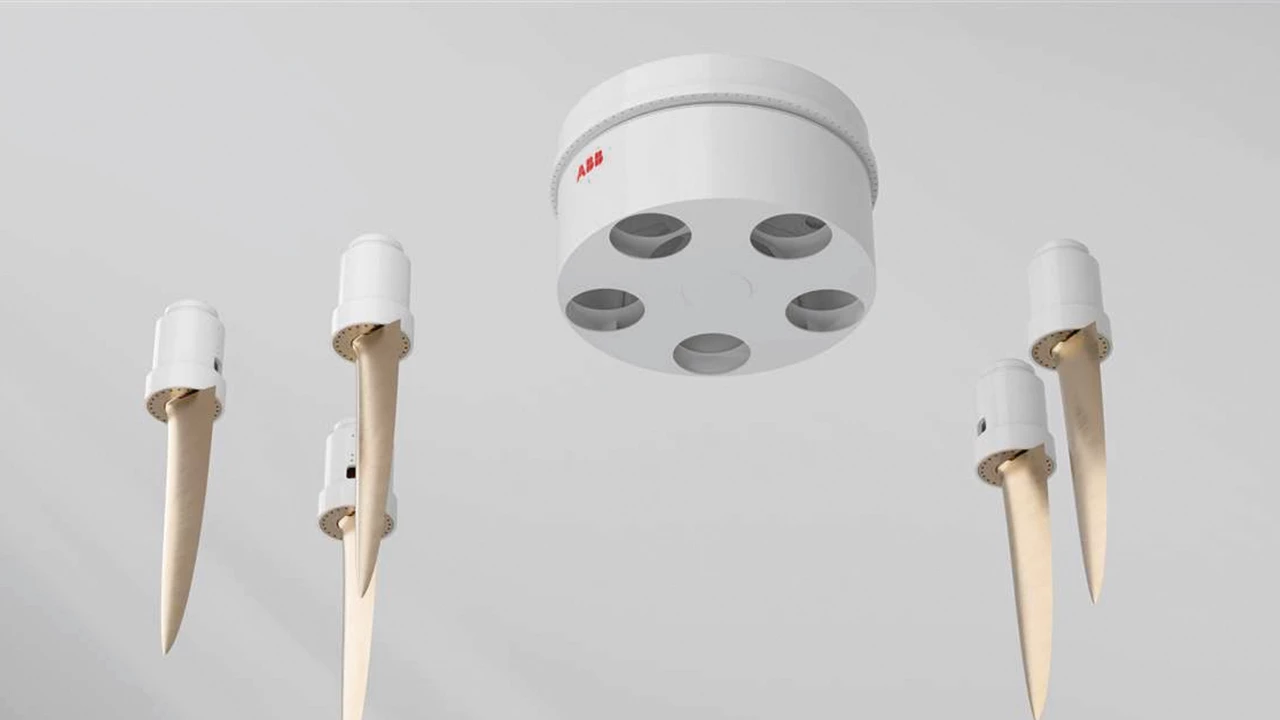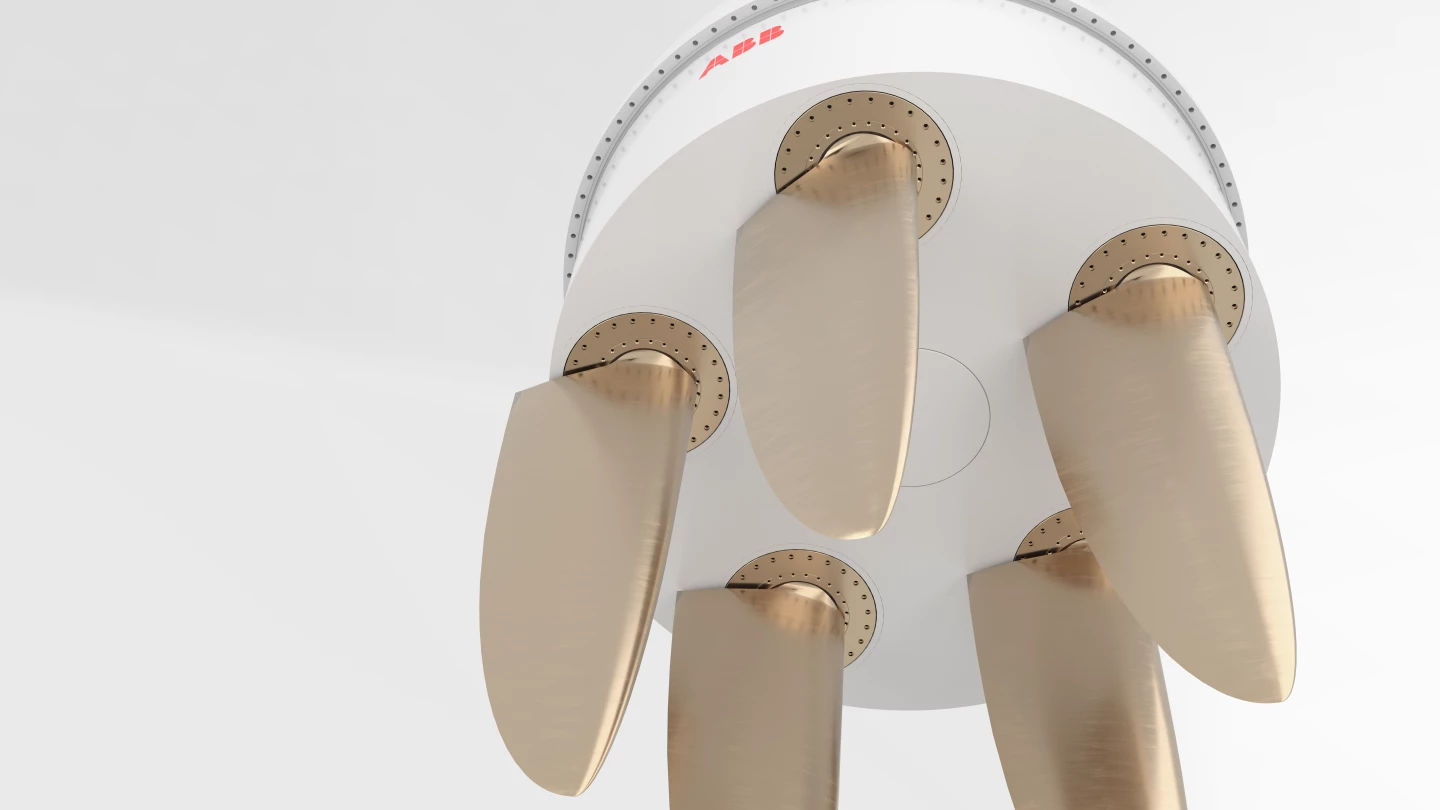Earlier this month, we featured a Whale Design propeller that looked to nature for improved efficiency. Switzerland's ABB Marine has also been inspired by "the dynamic motions of a whale's tail" for its multi-blade Dynafin propulsion concept.
ABB Marine says that if the shipping industry was a country, it would be the sixth largest greenhouse gas emitter in the world. The International Maritime Organization has set a target of 50% reductions of global emissions by 2050, compared to levels in 2008, and now the race is on to find and use cleaner fuels and technologies to help meet these goals.
"These challenges require smarter solutions to keep things moving while still consuming less energy," said ABB's Janne Pohjalainen. "ABB has long been at the forefront of propulsion innovation, having undertaken a major step with the launch of the first generation Azipod system in the 1990s, which changed the way ship operate today... Now it's time to take the next big leap with our latest innovation that is inspired by the movement perfected by evolution."
The Dynafin concept has been more than a decade in research and development, and is described as essentially a cycloidal propeller – where vertical blades are mounted to a spinning circular plate to provide thrust. It's not a new idea, the Cyclogyro from and few years back took the setup to eVTOLs while Voith Schneider props have seen use by the US and French Navies.

For ABB's take on the design, an electric motor drives a large disc on the underside of a ship or boat, which spins at between 40 and 80 revolutions per minute as needed. The concept shows five independently controllable blades mounted below the disc, sitting equidistant along the circular edge – though the setup can run from four to six modules.
The combined efforts of wheel and blades generate propulsion in a motion likened to that of the tail of dolphin or whale. An onboard control system can rotate each blade around its own axis in real-time for simultaneous propulsion and steering of the vessel without needing to install a rudder.
ABB is promising instant thrust control, precise dynamic positioning capabilities and superior maneuverability, and is aiming for an open-water efficiency of up to 85%. The modular concept can also be optimized for different operator needs, different ship types and hull types.
Among the claimed advantages over more conventional propeller designs is a notable improvement in efficiency that could lead to significant savings on fuel costs for combustion engine vessels, with fewer emissions as an added bonus. The system boasts a relatively low component count too, which should make for reduced maintenance costs.

It should also be possible to run a boat on a more compact power plant, with ABB noting that this could be of particular significance for vessels running electric, fuel-cell or hybrid systems where large battery banks can take up valuable cargo space.
Such vessels can operate in "sensitive marine areas" too, thanks to the motors being housed within the host vessel's hull for reduced underwater noise, combined with the relatively "low-pressure pulses and blade-tip speeds" creating less turbulence.
It's not clear at this stage whether such a system could be painlessly retrofitted to existing ships and boats, or at what price to owners, though it could open up a world of new possibilities for designers of new builds.
The project, which was first unveiled mid-2023, is still at the concept stage of development at the moment. ABB reports that successful simulations and scale-model testing have been undertaken, and contact made with ship designers "to validate the feasibility of the concept."
In fact, independent testing of a passenger vessel fitted with different propulsion systems found that the ABB Dynafin solution managed energy savings of 22% compared to conventional shaftline configurations. The first full prototype is coming next year.

"ABB Dynafin shows what is possible when marine engineers pursue radical innovation and progress, inspired by the interplay of evolution and technology," said ABB's Juha Koskela at concept launch. "This solution is all about operational efficiency and emissions avoidance, leveraging innovations from the brightest minds in marine and propulsion engineering."
The company envisions a 1 to 4 MW per propulsor unit being suitable for small and medium-sized passenger or work vessels, though larger vessels such as cruise ships could host multiple units – and plans already call for the technology to be incorporated in a new 450-ft superyacht called Aeolis from Oceanco. The video below has more.
Source: ABB








